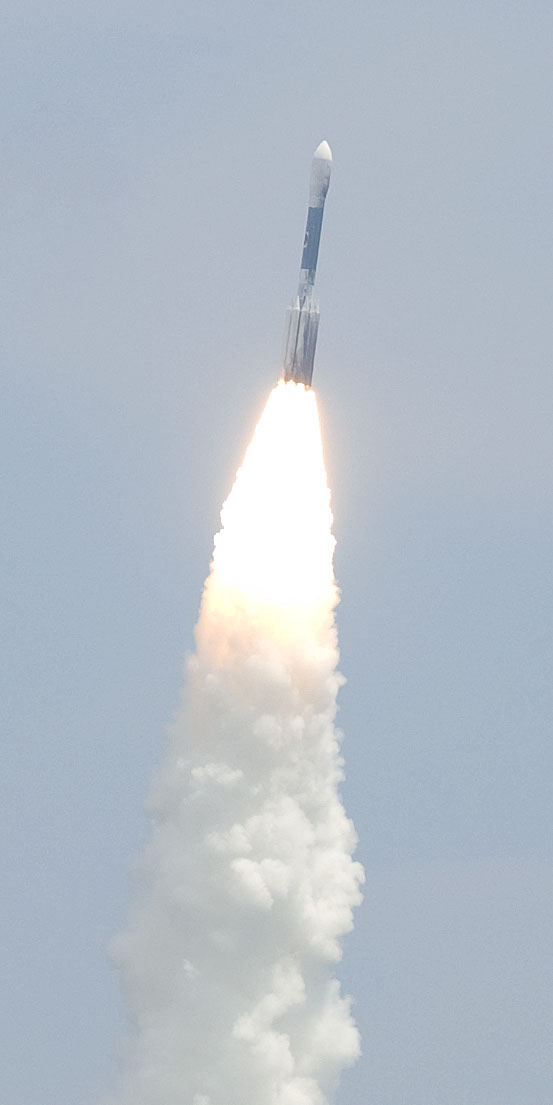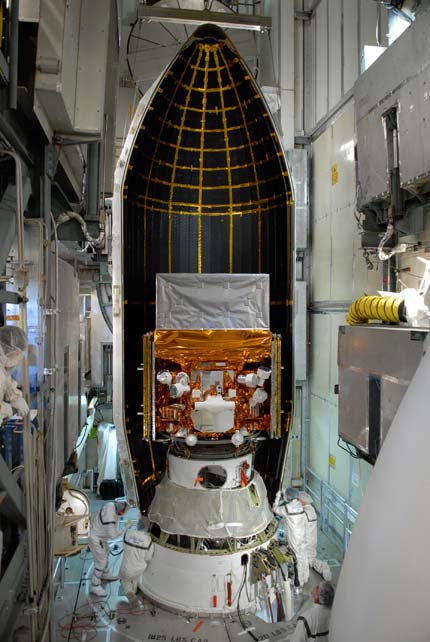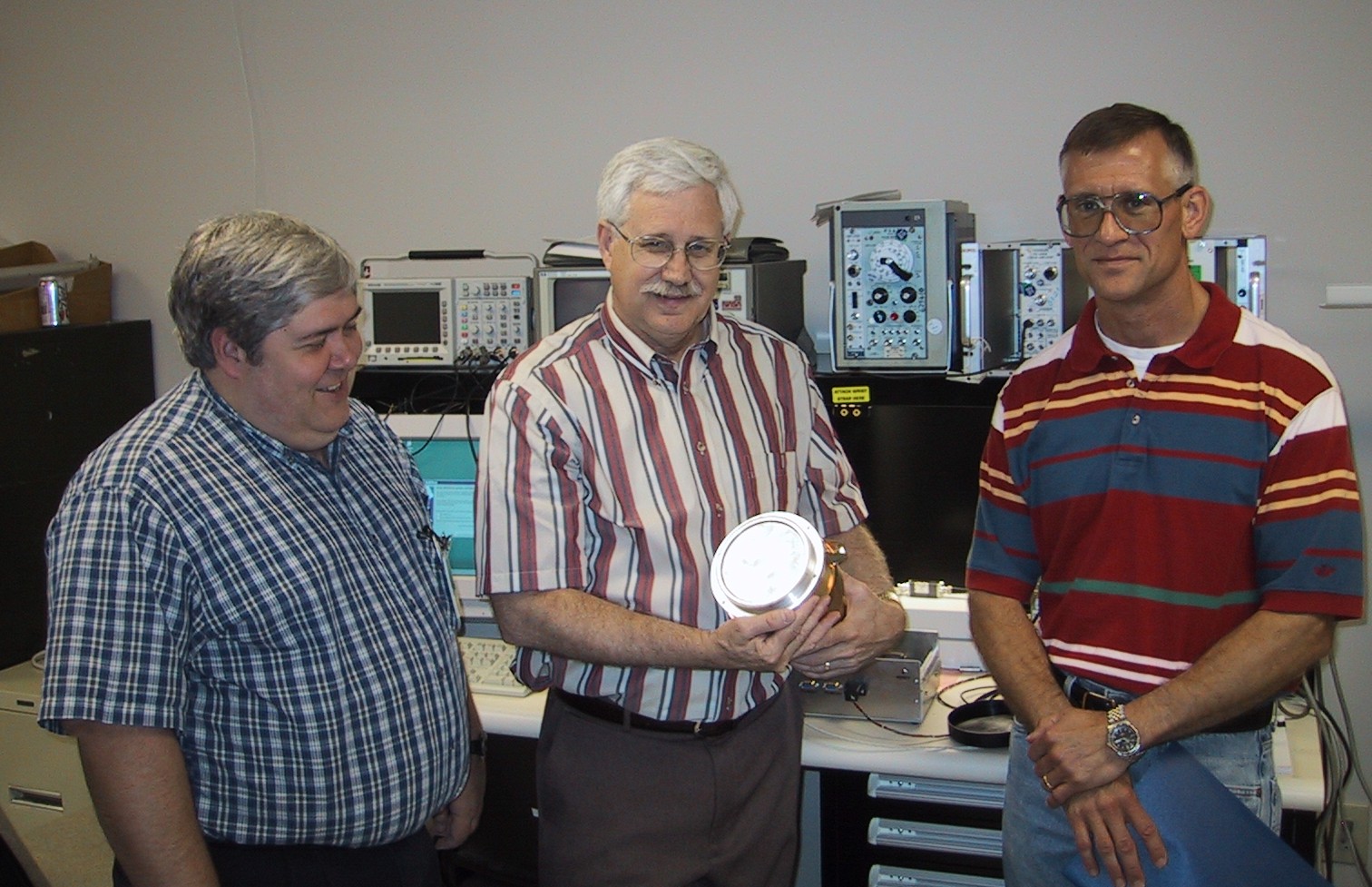9-12 May 2011
The 3rd Fermi Symposium was held in Rome.
8 June 2009
A new transient source was detected by GBM on 5 June 2009. Two short, soft bursts were seen, 21 minutes apart. The first one was also seen by the Konus-RF and Swift-BAT instruments. Details on our Magnetar page.
19-24 October 2008
After an absence of 9 years, the Gamma-Ray Burst Symposium took place in Huntsville, AL from 19-24 October 2008.
August 2008
NASA announced the new name for the GLAST observatory which will now be known as the Fermi Gamma-Ray Space Telescope. The GLAST Burst Monitor will keep the acronym GBM which will now stand for Gamma-ray Burst Monitor and will adopt the prefix Fermi. Both the GBM and the LAT presented first light images to the press. The Fermi GBM continues to detect gamma-ray bursts and other phenomena. Here is a list of our recent GCN circulars.
June 2008

May 2008
GLAST has left Astrotech and is being prepared for a June 5 2008 launch.

February 2008
In December 2007 the GLAST Observatory was shipped to Naval Research Lab (NRL) for Thermal Vacuum testing. This testing was completed in Febrary 2008. The Observatory has now been shipped to Florida and resides at the Astrotech facility where it is undergoing final calibrations and testing.
October 2007
Vibration and Acoustics Testing took place at General Dynamics.
July 2007
Following successful completion of the Comprehensive Performance Test (CPT), observatory-level environmental testing of GLAST began at General Dynamics. Electromagnetic Interference/Compatibility (EMI/EMC) scans required the spacecraft be moved to a special chamber beginning June 2007. EMI/EMC scans are now complete and the spacecraft has been returned to the High Bay.
March 2007
The first Observatory Level testing was performed in the High Bay of the Factory of the Future at General Dynamics.
February 2007
The First International GLAST Symposium took place at Stanford University on 5-8 February 2007.
January 2007
The GBM is now mechanically and electrically integrated with the spacecraft. It performed successfully during its functional testing.
December 2006
The LAT has now been mechanically integrated with the spacecraft.
October 2006
GBM is currently being integrated with the spacecraft.
8 August 2006
GBM bench testing at SpectrumAstro is complete and GBM is ready for integration with the spacecraft. During lulls in testing, GBM team members relax by flying in small planes ( Michael with SpectrumAstro engineer Tim Morse, Valerie).
24 July 2006
GBM was packed and shipped from the NSSTC to General Dynamics SpectrumAstro in Gilbert, AZ. As promised, Chip kisses the wheel to bid the truck on its way. A press release by MSFC covers the story.
28 June 2006

On June 28 2006, the GBM team lost a most valued member and friend. Fred Berry, our lead systems engineer, died unexpectedly after a short illness. Fred was involved in the design and construction of GBM from its inception, and contributed to every aspect of its development. He had a working and personal relationship with many team members going back to the development of the BATSE experiment in the 1980's, and is greatly missed by all of us.
GBM went through thermal vacuum testing in the Environmental Test Facility at Marshall Space Flight Center.
May 2006
GBM went through thermal vacuum testing in the Environmental Test Facility at Marshall Space Flight Center.
April 2006
GBM underwent electromagnetic interference (EMI) testing at Marshall Space Flight Center.
December 2005
Past, present and future GRB Experiment Principal Investigators at recent GRB conference GRB Symposium Gamma-Ray Bursts in the Swift Era (College Park, MD).
October 2005
All flight detectors and electronics integrated at NSSTC:
System Integration on test bench in lab at NSSTC.
September 2005
Flight Detectors and DPU shipped to NSSTC:
First Integration on test bench in lab at NSSTC.
June 2005
Engineering Quality Model Detectors shipped to NSSTC:
BGO Detector on test bench in lab at NSSTC.
NaI Detector on test bench.
Closeup of NaI detector.
April 2005
Engineering Quality Model Detectors at Max Planck Institute:
Gluing thermostat on EQM.
NaI and BGO Detectors in thermal vacuum chamber.
Flight Module Detectors at Max Planck Institute:
Gluing heater on Flight Module.
Assembly of NaI detector.
Flight module photomultiplier tubes.
March 2005
GBM Instrument to Spacecraft Interface Simulator integration test successfully held at SpectrumAstro site in Arizona.
When it's over, Bill and Bob sample local cuisine.
September 2003
Engineering Data Processing Unit (DPU) shipped to NSSTC from Southwest Research Institute.
12-13 September 2002
A meeting of the GLAST Science Working Group was hosted by the GBM team at the National Space Science and Technology Center (NSSTC). The first day was a mini-symposium on GRB science.
August 2002
Sodium Iodide detector shipped to NSSTC from Jena Optronik.
4-5 July 2002
The American Association of Variable Star Observers (AAVSO) held its 91st Spring meeting and 2nd High Energy Astrophysics workshop in Hawaii. The High-Energy Workshop was sponsored in part by GBM.
2 January 2002
Jena Optronik was awarded the contract for phase B development of the GBM detectors and power supplies.
27 September 2001
A contract was awarded to Southwest Research Institute of Austin, Texas to build the GBM Data Processing Unit.
31 July 2001
GBM Quarterly Review presentation to GLAST Project Manager at GSFC by Chip Meegan and Steve Elrod.
30 May 2001
GBM Preprints Available
Preprints of GBM papers from recent conferences are now available.
18 April 2000
GBM Proposal Volume I (Science Investigation and Technical Description) available.
14 March 2000
GBM selected as the secondary instrument for GLAST.
Read the NASA Press Release.
Author: Valerie Connaughton Responsible Manager: Steve Elrod Site Curator: Valerie Connaughton
